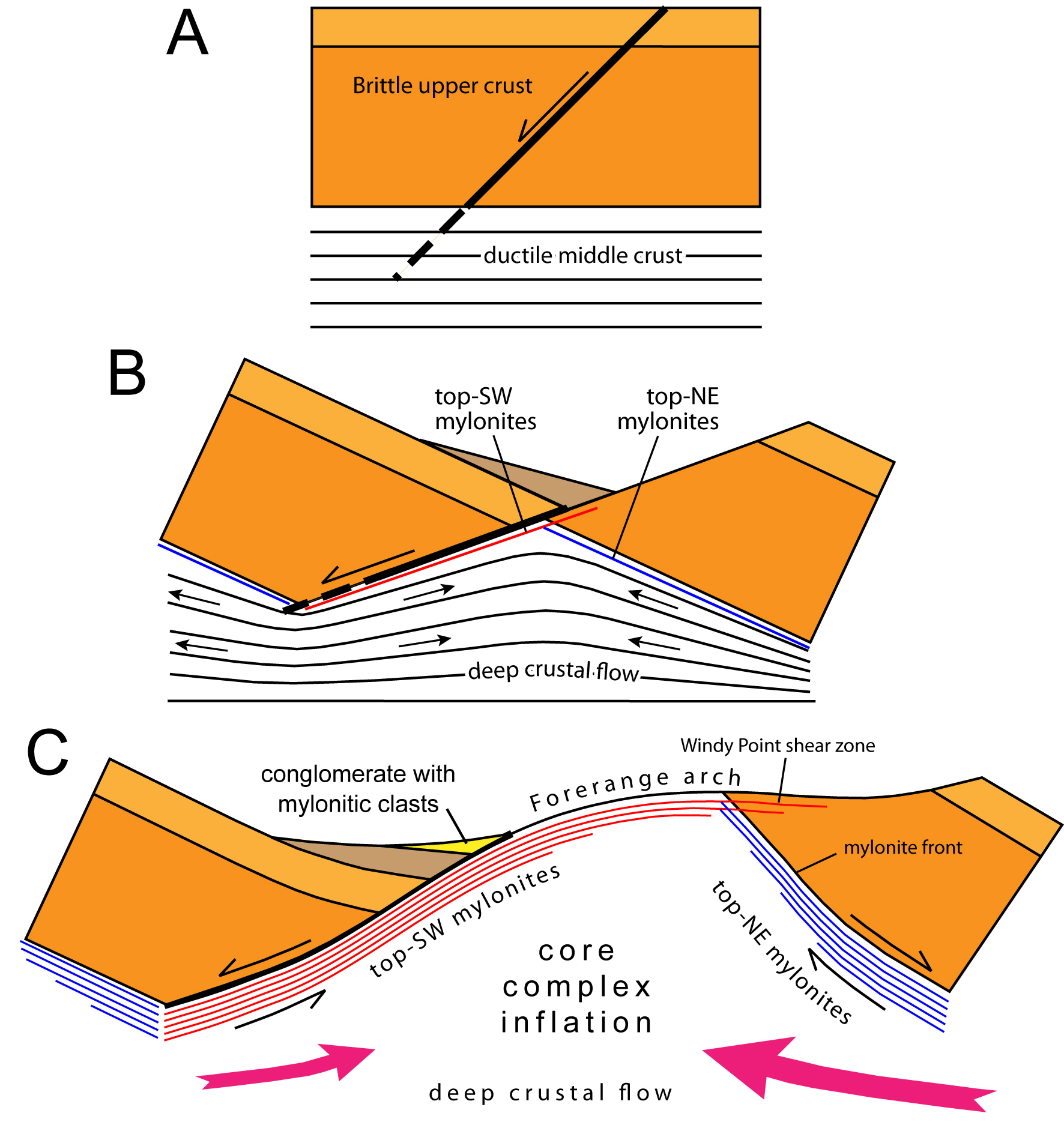Arizona Geological Society
2023 Speaker Series
Tuesday, 7 November 2023 | 5:30 - 8:00 PM
Meeting Cancelled Due to Illness
Will be Rescheduled in 2024
Location: Hexagon Mining Division Office
40 East Congress Street, Suite 150, Tucson, Arizona 85701
Parking: On the street or parking garage (Old Pueblo Parking)
Social Hour with Sandwiches from Beyond Bread (5:30-6:30 PM) Presentation (6:35 PM)
For those planning to attend the event, please register by 6:00 PM on Sunday, November 5, 2023
For those unable to attend, the remote broadcast begins at 6:35 p.m.
No registration or fee to attend remotely.
The Arizona Geological Society also thanks Hexagon
for generously providing the venue and drinks
Cenozoic Tectonic Extension in the Mojave-Sonora Desert Region
Dr. Jon Spencer
Adjunct Researcher, Department of Geosciences,
University of Arizona
Abstract: Over the past 30 million years, severe tectonic extension in the Mojave-Sonora desert region, which includes southern and western Arizona, roughly doubled the land area and halved the crustal thickness. Before this time a high mountain range in this area was the source of clastic debris shed southwestward toward the Pacific continental margin and northeastward onto what is now the Colorado Plateau. Extensional demolition and lowering of this mountain range occurred during two episodes. The first episode, before ~12-16 Ma, was characterized by low-angle normal faulting, metamorphic-core-complex genesis, and voluminous felsic magmatism. The second episode, characterized by high-angle normal faulting and dominantly basaltic magmatism, is still active at a low level.
Two areas affected by this tectonic extension are especially instructive about extensional tectonic processes and consequences. In the Tucson area the first period of extension occurred in an ENE-WSW direction and uncovered mid-crustal mylonitic rocks that make up the greater Catalina metamorphic core complex. The second episode, with extension in an E-W direction and dominated by high-angle normal faulting, cut across the first and contributed to the complex structural geology in southeastern Arizona that has taken decades to decipher, with many questions remaining (e.g., Spencer et al., 2022). The first part of this lecture will focus on reconstruction of these two pulses of extension in the greater Tucson area and implications for the pre-extension distribution of porphyry copper deposits.

The area between Wickenburg and the Colorado River in western Arizona is exceptional as it contains one of the largest metamorphic core complexes on Earth (e.g., Spencer et al., 2018). It has been largely unaffected by high-angle normal faulting and is both geologically young (active at ~27-11 Ma) and very well exposed in an exceptionally arid region. It also includes by far the best-known examples of IOCG-like mineralization along and near a low-angle normal fault (a “detachment” fault, with 50-60 km of displacement). The second part of this lecture will focus on processes that led to genesis of this core complex and related features.
 Bio: Jon Spencer received his Ph.D. in Geology from M.I.T. in 1981. After a year as a USGS post-doc he worked for 33 years for the Arizona Geological Survey (AZGS) as a Research Geologist and then Senior Geologist. He was responsible for the AZGS bedrock geologic mapping program and, largely with joint Federal-State STATEMAP funding, supervised and participated in fieldwork that led to ~70 AZGS geologic maps. He also researched and published articles on metallic mineral deposits, radon and uranium, and the Pliocene Bouse Formation that was deposited when Colorado River water first reached the Mojave-Sonoran desert region. He retired in 2015 but has continued to write and publish articles on the geology of southwestern North America. He lives in Tucson with his wife Margaret.
Bio: Jon Spencer received his Ph.D. in Geology from M.I.T. in 1981. After a year as a USGS post-doc he worked for 33 years for the Arizona Geological Survey (AZGS) as a Research Geologist and then Senior Geologist. He was responsible for the AZGS bedrock geologic mapping program and, largely with joint Federal-State STATEMAP funding, supervised and participated in fieldwork that led to ~70 AZGS geologic maps. He also researched and published articles on metallic mineral deposits, radon and uranium, and the Pliocene Bouse Formation that was deposited when Colorado River water first reached the Mojave-Sonoran desert region. He retired in 2015 but has continued to write and publish articles on the geology of southwestern North America. He lives in Tucson with his wife Margaret.

Hexagon Mining Division Office - 40 East Congress Street,
Suite 150, Tucson, Arizona 85701